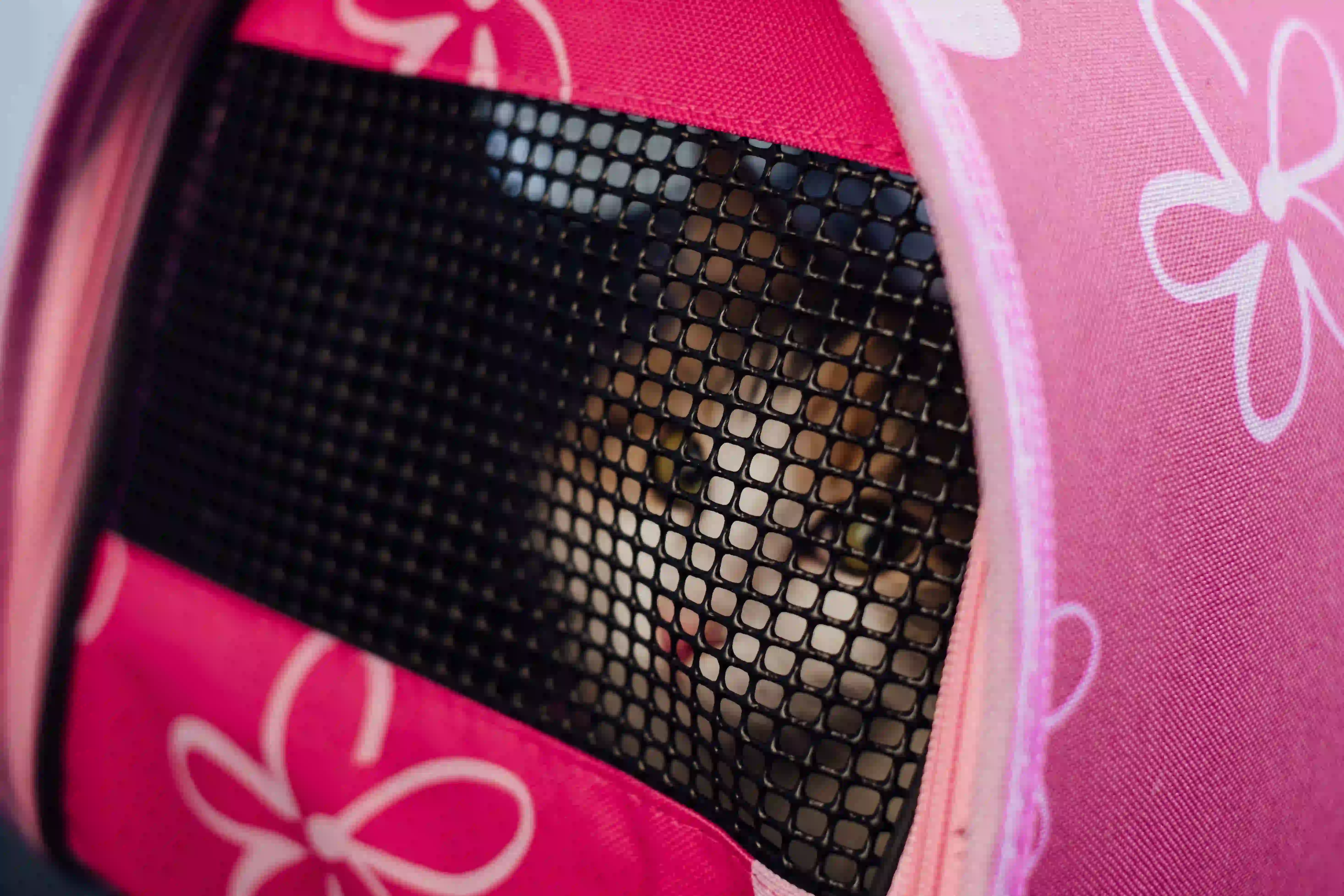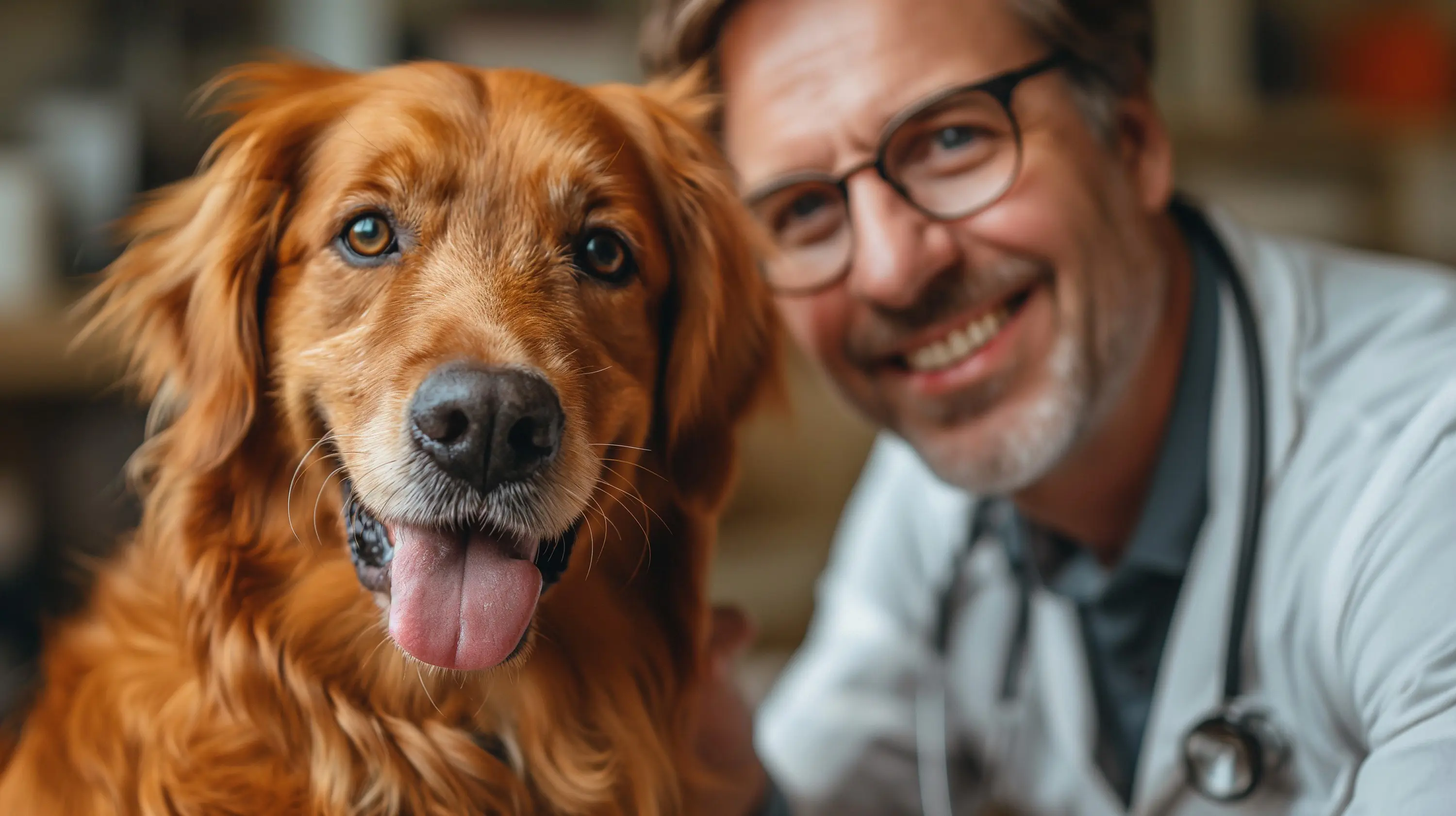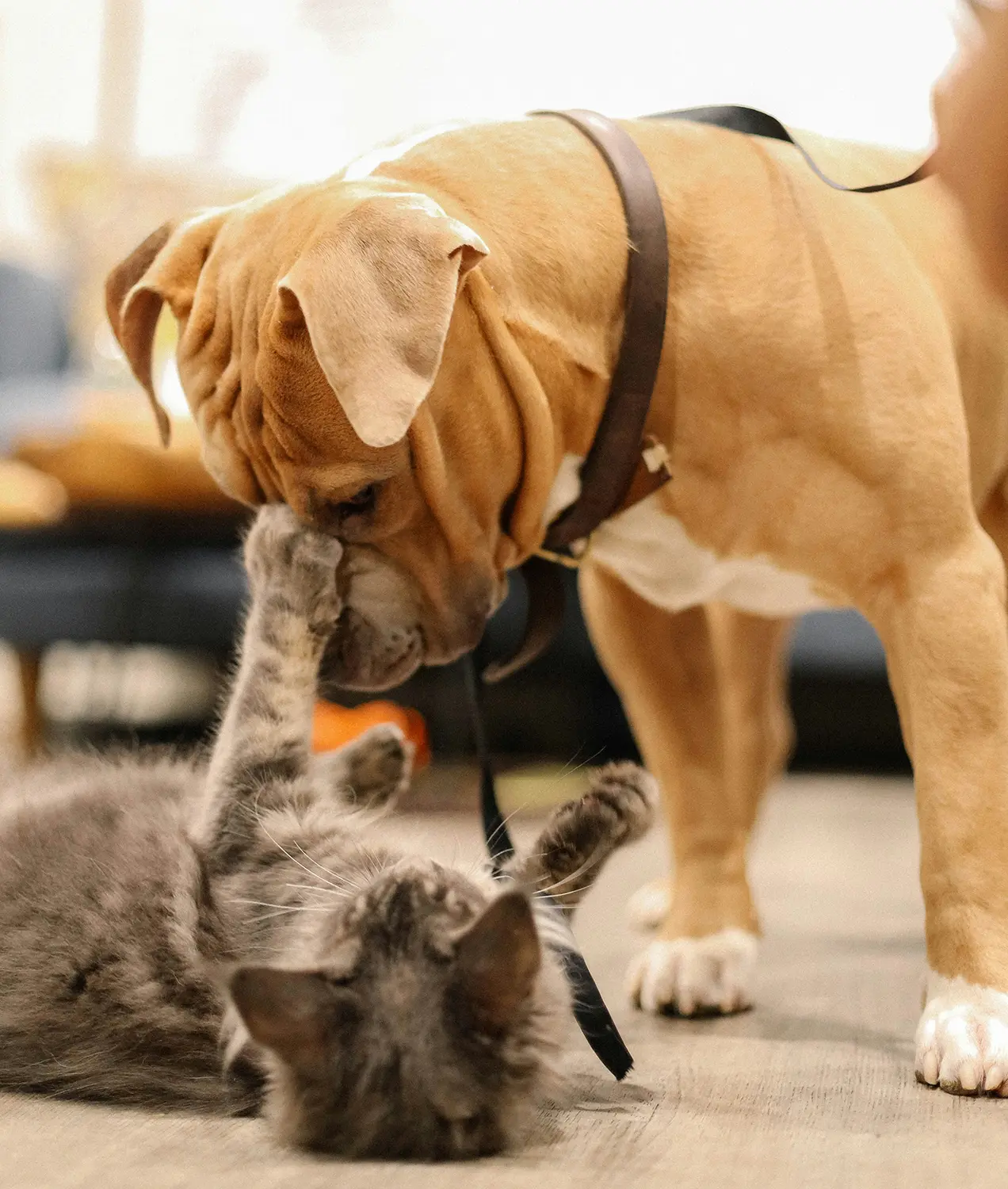
Viajar con su mascota puede ser una experiencia emocionante y gratificante, que le permitirá compartir nuevas aventuras y crear recuerdos duraderos juntos. Sin embargo, requiere una planificación y preparación cuidadosas para garantizar la seguridad, la comodidad y el bienestar de su mascota. Tanto si se embarca en un viaje por carretera como si vuela a un destino lejano o viaja en tren, esta guía le ayudará a sortear las complejidades de viajar con su peludo compañero.
Preparativos previos al viaje
1. Revisión médica
Antes de cualquier viaje, programe una revisión veterinaria con nosotros para asegurarse de que su mascota está lo bastante sana para viajar. Nos aseguraremos de que su mascota esté al día con las vacunas y los tratamientos preventivos contra pulgas, garrapatas y gusanos del corazón.
Si viaja a otro estado, tenga en cuenta que muchos estados exigen un Certificado de Inspección Veterinaria (CVI) o un certificado sanitario expedido por un veterinario acreditado. Podemos emitir este documento por usted. Confirma que su mascota está sana y libre de enfermedades contagiosas. Normalmente debe expedirse en los 10 días anteriores al viaje. Consulte aquí los requisitos para viajar con mascotas según el estado.
La mayoría de los estados exigen una prueba de vacunación antirrábica, y algunos pueden tener requisitos de vacunación adicionales. Por lo tanto, debe llevar consigo una copia de la cartilla de vacunación de su mascota.
Si viaja a otro país o se traslada a él, lea nuestra guía Viajar o trasladarse al extranjero con su mascota: Guía completa
2. Identificación y microchips
Asegúrese de que su mascota lleva la identificación adecuada, incluido un collar con una placa que contenga su información de contacto. El microchip es una forma fiable de garantizar que su mascota pueda ser identificada y devuelta si se pierde.
3. Kit de viaje para mascotas
Empaque un kit de viaje con elementos esenciales como:
- Comederos y bebederos
- Correa, collar y arnés
- Bolsas de basura y caja de arena (para gatos)
- Medicamentos y material de primeros auxilios
- Juguetes favoritos y una manta para su comodidad
- Copias de los registros de vacunación y certificados de salud
4. Aclimate a su mascota
Si su mascota no está acostumbrada a viajar, empiece con viajes cortos para que se acostumbre al coche o al transportín. Aumente gradualmente la duración de estos viajes para ayudar a reducir la ansiedad.
Viajar en coche
1. Sujeción segura
Asegure siempre a su mascota en el coche para evitar distracciones y garantizar su seguridad. Utilice un cinturón de seguridad, un arnés o una jaula de viaje. Nunca permita que su mascota deambule libremente por el vehículo.
2. Descansos frecuentes
Planifique descansos regulares cada 2-3 horas para que su mascota pueda estirarse, hacer sus necesidades e hidratarse. Asegúrate de que siempre vaya atado con una correa durante estos descansos.
3. Entorno cómodo
Mantenga una temperatura agradable en el coche y evite dejar a su mascota sola en el vehículo, especialmente en condiciones meteorológicas extremas. Proporcione una amplia ventilación y mantenga las ventanas parcialmente abiertas si es necesario.
4. Evite el mareo
Para prevenir el mareo, evite dar a su mascota una comida copiosa antes del viaje. Podemos recomendarle medicamentos contra las náuseas si su mascota es propensa a marearse.
Viajar en avión
1. Política de la compañía aérea
Infórmese con antelación sobre las normas de la compañía aérea para viajar con su mascota. Las distintas aerolíneas tienen requisitos específicos en cuanto a transportines para mascotas, certificados sanitarios y tasas de viaje.
2. Transportín aprobado
Elija un transportín aprobado por la compañía aérea que esté bien ventilado, sea seguro y lo suficientemente grande para que su mascota pueda estar de pie, darse la vuelta y tumbarse cómodamente. Etiquete el transportín con su información de contacto y una pegatina de «Animal vivo».
3. Preparativos previos al vuelo
Llegue al aeropuerto con antelación para disponer de tiempo suficiente para los procedimientos de facturación y seguridad. Asegúrese de que su mascota ha podido hacer sus necesidades antes de embarcar.
4. En cabina o de carga
Si es posible, opte por que su mascota viaje con usted en la cabina. Si su mascota debe viajar en la bodega de carga, asegúrese de que el transportín es resistente y seguro. Informe a los auxiliares de vuelo de que su mascota viaja en la bodega de carga para que puedan controlar la temperatura y las condiciones.
Viajar en tren o autobús
1. Compruebe las políticas
No todas las compañías de tren o autobús admiten animales de compañía, así que compruebe sus políticas de antemano. Algunas pueden tener restricciones sobre el tamaño o el tipo de mascota permitida.
2. Transportín cómodo
Utilice un transportín seguro y bien ventilado que cumpla la normativa de la empresa. Asegúrese de que su mascota esté cómoda y tenga objetos familiares como un juguete o una manta dentro del transportín.
3. Horario de viaje
Elija horas de viaje con menos gente para reducir el estrés de su mascota. Asegúrese de que su mascota ha podido hacer sus necesidades antes del viaje y dele agua con frecuencia.
Estancias en hoteles con mascotas
1. Alojamientos que admitan mascotas
Reserve alojamiento en hoteles o alquileres vacacionales que admitan mascotas. Confirme sus políticas sobre mascotas, incluyendo cualquier tarifa adicional o restricciones sobre el tamaño o la raza de la mascota.
2. A prueba de mascotas
Cuando llegue, compruebe que la habitación no presenta peligros potenciales y, si es necesario, póngala a prueba de mascotas. Asegúrese de que las ventanas y balcones son seguros, y retire cualquier objeto que su mascota pueda morder o tragar.
3. Respete las normas del hotel
Siga las normas del hotel sobre animales de compañía, incluidas las zonas designadas para ellos y las restricciones de ruido. Limpie siempre lo que ensucie su mascota y evite dejarla sola en la habitación durante períodos prolongados.
Consejos generales de viaje
1. Mantener la rutina
Intente respetar en la medida de lo posible el horario habitual de alimentación y ejercicio de su mascota. Las rutinas familiares pueden ayudar a reducir el estrés y la ansiedad durante el viaje.
2. 2. Vigile su comportamiento
Esté atento a los signos de estrés o malestar de su mascota, como jadeos, lloriqueos o inquietud. Bríndele consuelo y tranquilícelo según sea necesario, y haga ajustes en sus planes de viaje si es necesario.
3. Preparación para emergencias
Conozca la ubicación de la clínica veterinaria más cercana a su destino.
Conclusión
Viajar con su mascota puede ser una experiencia agradable si se planifica y prepara adecuadamente. Si dedica tiempo a garantizar la salud, seguridad y comodidad de su mascota, podrán disfrutar juntos de aventuras sin estrés. Tanto si sale a la carretera como si vuela a un nuevo destino o viaja en tren, estos consejos le ayudarán a realizar el viaje con facilidad y a crear recuerdos maravillosos con su peludo compañero.










Escribir un comentario
¿Cuál es su calificación general?